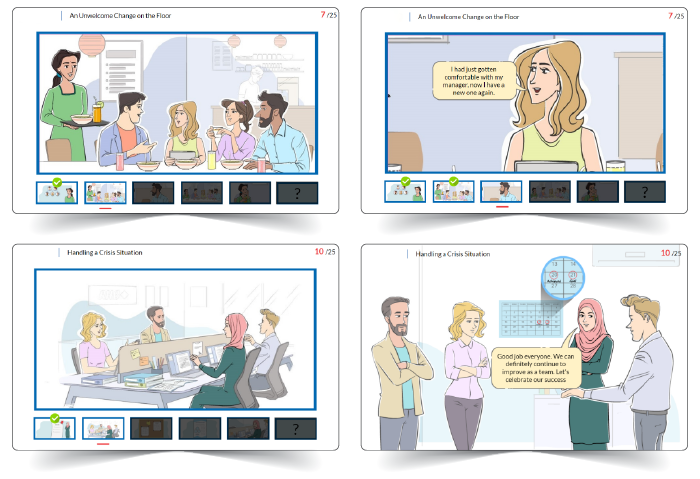There are a variety of levels of possible impact of an intervention. One of the first steps of evaluation is what learners think of the learning experience. While their assessment of the value isn’t always well-correlated with the actual impact, that is less true with more experienced employees. It’s also a step up the evaluation ladder, in this case from not evaluating at all! Improving the ratings, when well done, can be the start of improvements of impact. In this case study, we share an example of such an impact.
Situation

A core framework is the so-called Kirkpatrick model (with caveats about the legitimacy of the claim to fame).
The client in this case was an international finance institution. There was an awareness that the existing corporate culture didn’t represent the desired state of affairs. This included pride in the institution and loyalty and commitment to it. The goal was to remedy this situation.
They had used eLearning before, but it was largely idiosyncratic in quality. They were looking to establish a stronger corporate culture across their various branches, and eLearning provided a solution that would support reaching across international boundaries.
Approach

A core framework is the so-called Kirkpatrick model (with caveats about the legitimacy of the claim to fame).
Several elements were considered critical in design. A starting point was to help them recognize the necessity of the step. The goals also included developing the ability to apply the values, not just recite them. There was also a desire to make this transition feel natural and safe.
To establish the importance, the design started with a ‘hook’. This was to help employees recognize that the topic was new and not already known and commit to the experience.
As a way to keep learners from feeling anxious, a conversational tone was used. This was to help learners feel safe to participate. Using natural language is a recommended approach, in general.
With the goal of having learners see how the corporate culture values played out in practice, there were scenarios to engage in. This gave the learners the opportunity to explore how the values manifested in the workplace. Scenarios were used to contextualize the application.
An important component to complement the practice was meaningful feedback. Learners were given causal explanations about what happened as a result of their choices, so they could develop a rich conceptual understanding of how these values worked in practice.

Outcome

A core framework is the so-called Kirkpatrick model (with caveats about the legitimacy of the claim to fame).
This approach led to several valuable outcomes. As intended, the ratings of the course were high: 4.8 out of 5 is a good outcome and was superior to previous ratings. While the rating isn’t a deep indicator of success, this was an improvement.
In addition, the course design was considered a new baseline for quality. The approach taken became the minimum standard for eLearning going forward. It also led to the revising of some previous courses that were critical to the organization but didn’t achieve such outcomes.
Also, the course was submitted to international competitions and was recognized for its quality.
In this successful case study, an international finance institution utilized strategic eLearning to transform its corporate culture. By implementing engaging design elements, practical scenarios, and meaningful feedback, the Learning & Development team achieved a high course rating of 4.8 out of 5, surpassing previous benchmarks. This not only improved employee perceptions but also set a new standard for eLearning quality. The initiative’s success was further recognized in international competitions. For a comprehensive understanding of learning impact strategies and implementation, we invite you to explore our eBook, Designing for Learning Impact: Strategies and Implementation.



















